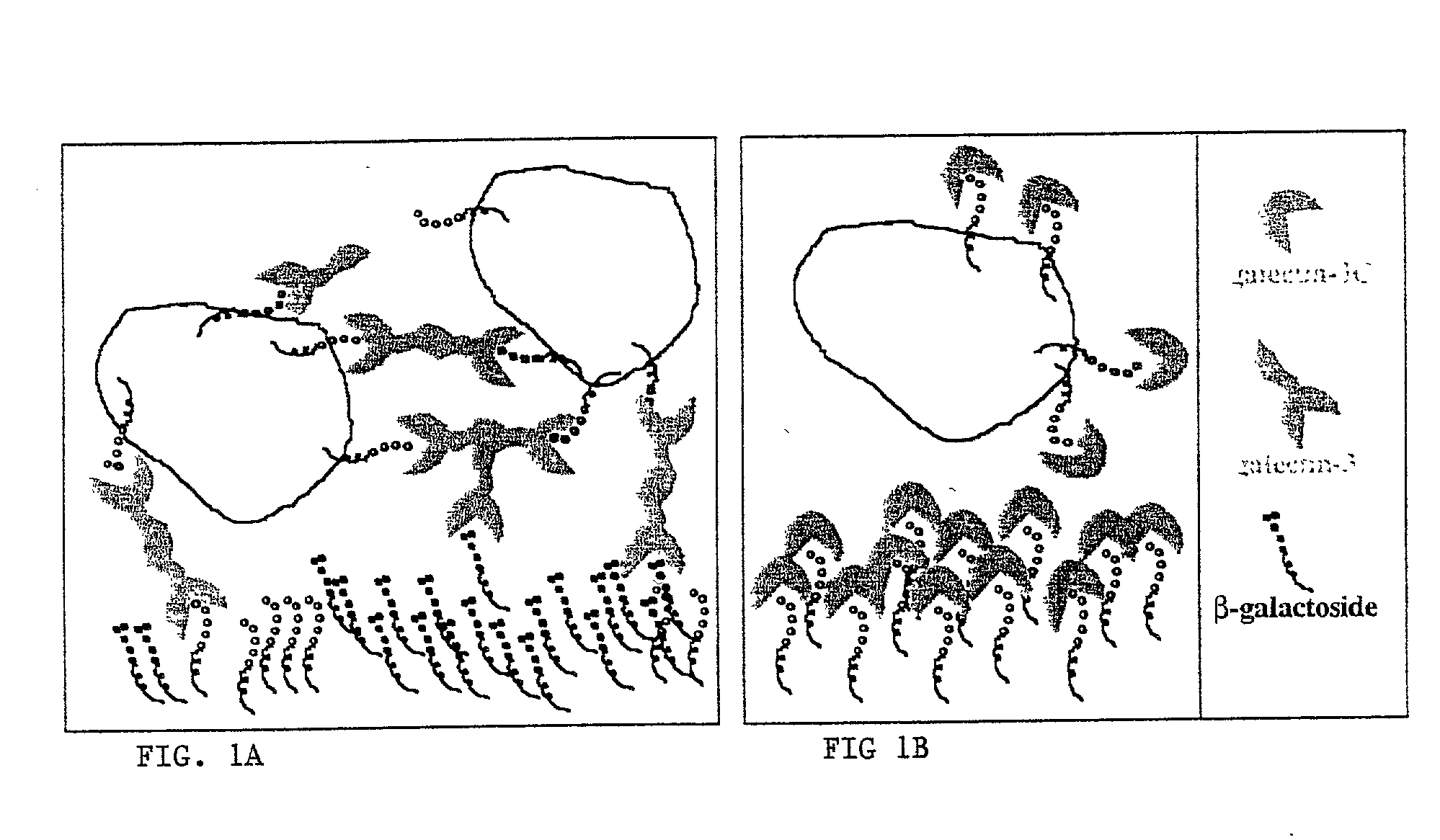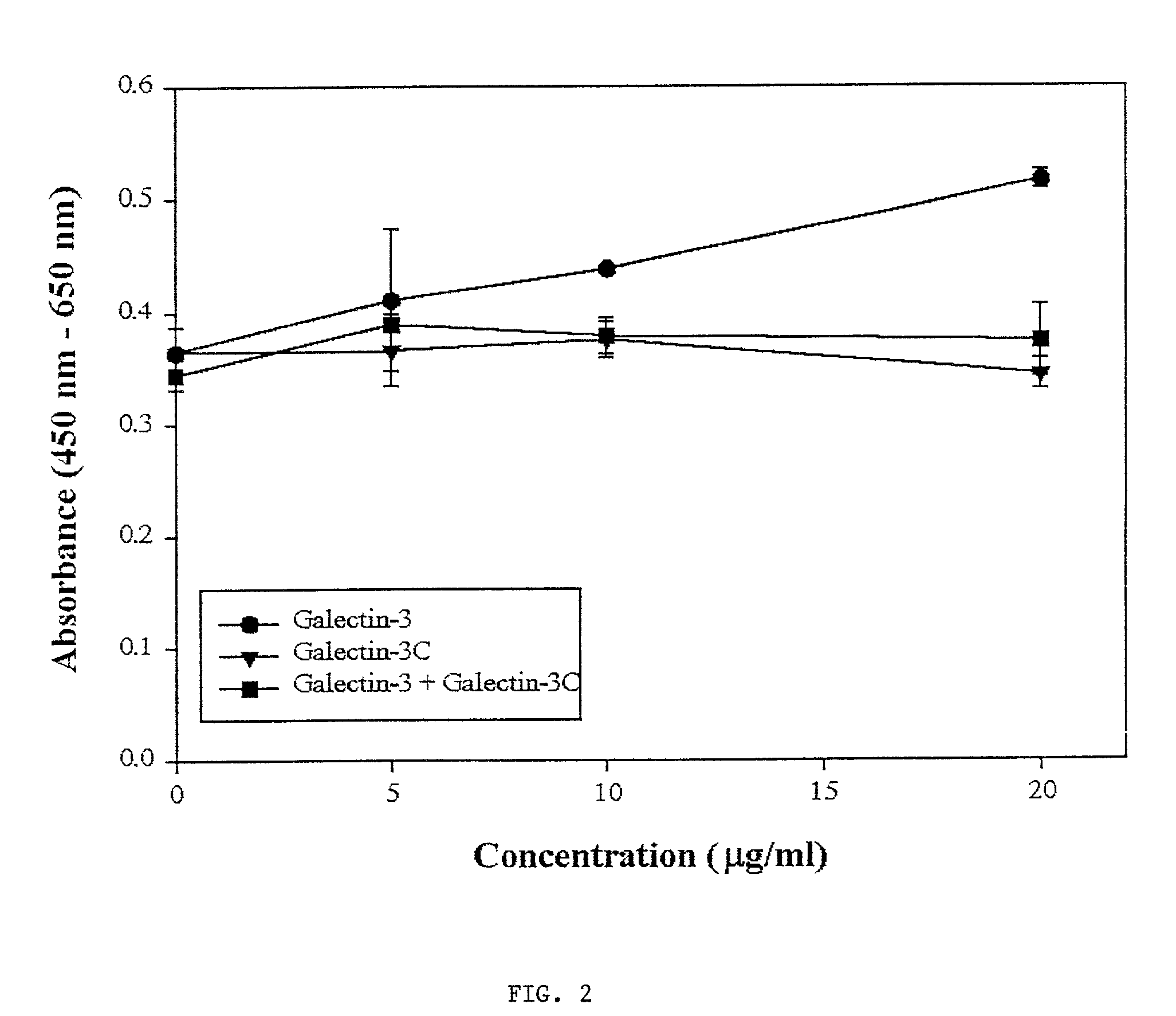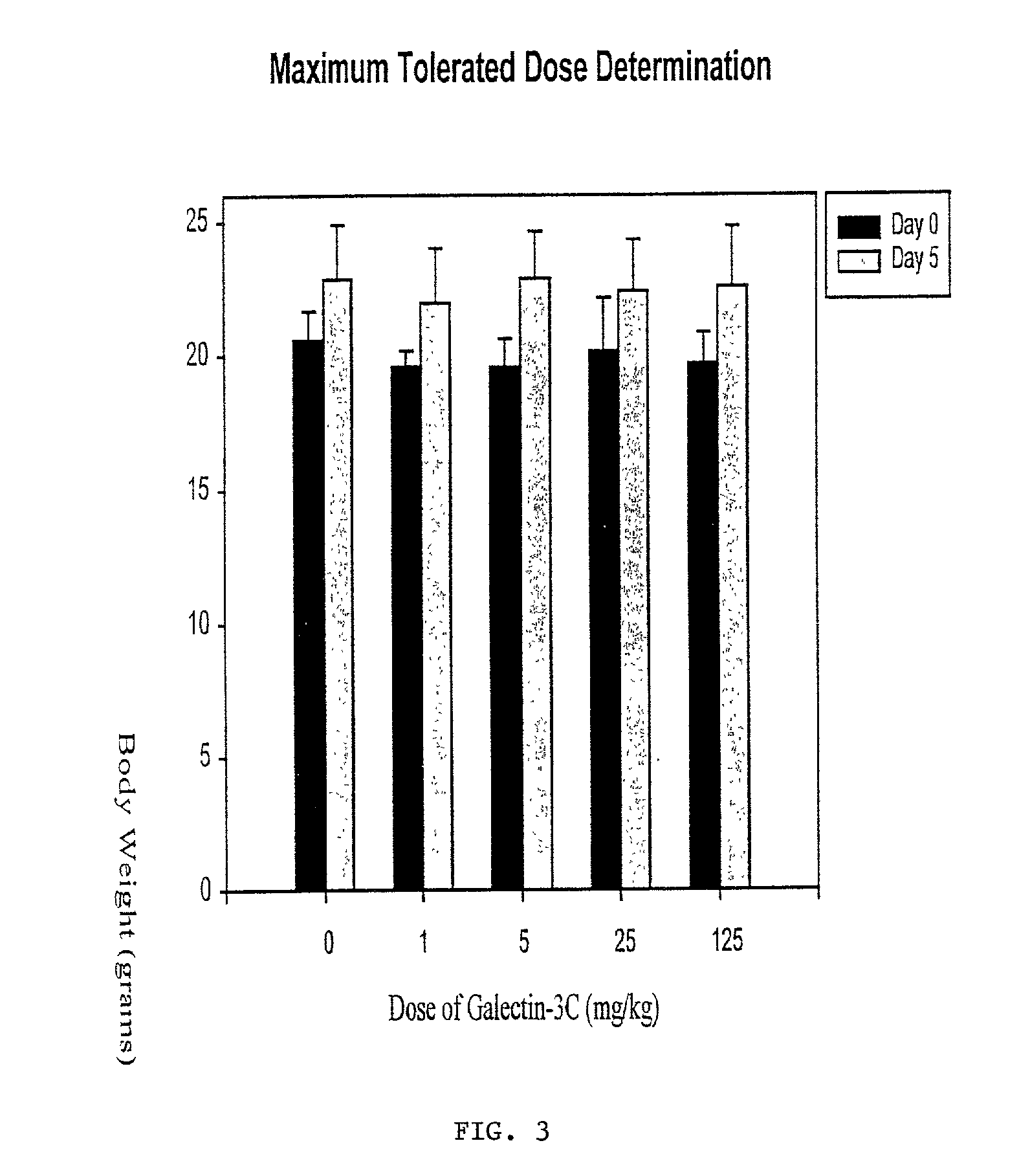N-terminally truncated galectin-3 for use in treating cancer
a technology of n-terminal truncation and cancer, which is applied in the direction of peptides, drug compositions, peptides, etc., can solve the problems of increased tumorigenicity and metastasis, decreased expression of galectin-3, and complicated role of galectin-3 in cancer
- Summary
- Abstract
- Description
- Claims
- Application Information
AI Technical Summary
Problems solved by technology
Method used
Image
Examples
example 1
[0075] As background for the following example, mounting evidence suggests that tumor cells express the .beta.-galactoside-binding lectin galectin-3 on their surfaces and that tumor cells metastasize partly due to processes involving cellular adhesion and aggregation mediated by galectin-3. Galectin-3 binds via its C-terminus carbohydrate recognition domain to binding sites in the extracellular matrix (1). The goal of this research was the evaluation of a potential therapeutic agent for breast cancer based on galectin-3 lectin that acts directly to reduce metastases. Soluble recombinant N-terminally truncated galectin-3 competes with endogenous galectin-3 for carbohydrate binding sites in the extracellular matrix and cell-cell adhesions important in tumor invasion and metastasis. The N-terminal domain of galectin-3 promotes multimerization of the protein, and enables it to cross link cancer cells to the matrix and other cells (31). Excess administered N-terminally truncated galectin...
PUM
| Property | Measurement | Unit |
|---|---|---|
| time | aaaaa | aaaaa |
| time | aaaaa | aaaaa |
| pH | aaaaa | aaaaa |
Abstract
Description
Claims
Application Information
 Login to View More
Login to View More - R&D
- Intellectual Property
- Life Sciences
- Materials
- Tech Scout
- Unparalleled Data Quality
- Higher Quality Content
- 60% Fewer Hallucinations
Browse by: Latest US Patents, China's latest patents, Technical Efficacy Thesaurus, Application Domain, Technology Topic, Popular Technical Reports.
© 2025 PatSnap. All rights reserved.Legal|Privacy policy|Modern Slavery Act Transparency Statement|Sitemap|About US| Contact US: help@patsnap.com



